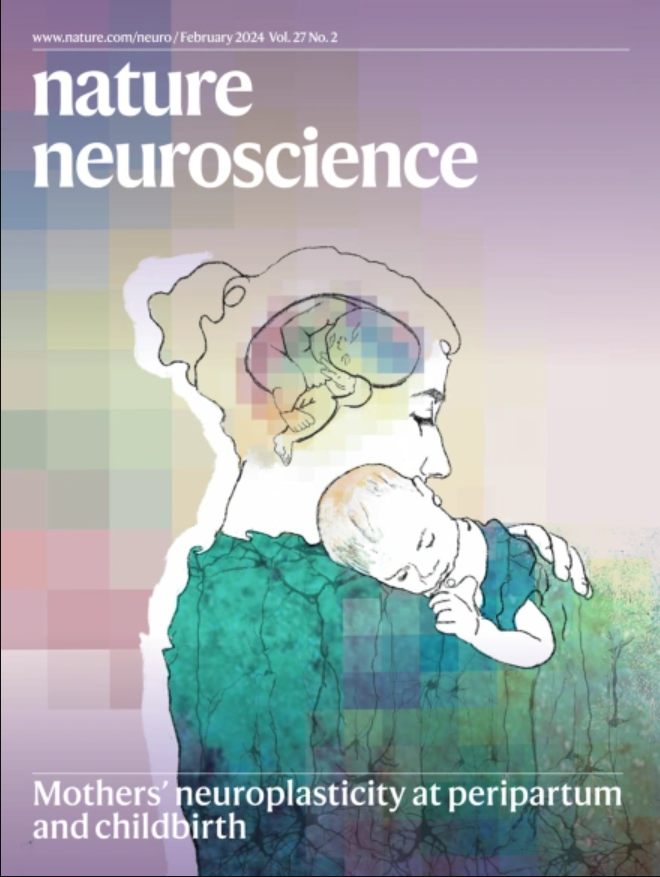突触可塑性规则驱动海马体的表征转移
IF 21.2
1区 医学
Q1 NEUROSCIENCES
引用次数: 0
摘要
突触可塑性被广泛认为支持大脑中的记忆存储,但决定体内有效突触变化的规则尚不清楚。我们认为海马体位置场(PF)在记忆形成和熟悉过程中是一个持续可塑性的指标。通过在脉冲位置细胞的计算模型中实施不同的可塑性规则,并将其与小鼠在熟悉和新环境中导航时实验测量的突触可塑性进行比较,我们发现行为时间尺度突触可塑性(BTSP),而不是Hebbian脉冲时间依赖可塑性(STDP),最好地解释了脉冲位移动力学。触发btsp的事件很少,但在新的体验中更频繁。在探索过程中,它们的概率是动态的——它在PF发作后衰减,但继续推动种群水平的代表性漂移。此外,我们的研究结果表明,BTSP发生在CA3中,但频率较低,而且在现象上与CA1不同。总的来说,我们的研究为理解突触可塑性如何在学习过程中持续塑造神经元表征提供了一个新的框架。本文章由计算机程序翻译,如有差异,请以英文原文为准。


Synaptic plasticity rules driving representational shifting in the hippocampus
Synaptic plasticity is widely thought to support memory storage in the brain, but the rules determining impactful synaptic changes in vivo are not known. We considered the trial-by-trial shifting dynamics of hippocampal place fields (PF) as an indicator of ongoing plasticity during memory formation and familiarization. By implementing different plasticity rules in computational models of spiking place cells and comparing them to experimentally measured PFs from mice navigating familiar and new environments, we found that behavioral timescale synaptic plasticity (BTSP), rather than Hebbian spike-timing-dependent plasticity (STDP), best explains PF shifting dynamics. BTSP-triggering events are rare, but more frequent during new experiences. During exploration, their probability is dynamic—it decays after PF onset, but continually drives a population-level representational drift. Additionally, our results show that BTSP occurs in CA3 but is less frequent and phenomenologically different than in CA1. Overall, our study provides a new framework to understand how synaptic plasticity continuously shapes neuronal representations during learning. Madar et al. report that behavioral timescale synaptic plasticity (BTSP), not spike-timing-dependent plasticity, explains heterogeneous place fields shifting in the hippocampus. The probability of BTSP induction follows patterned dynamics, is higher in new contexts and lower in CA3 than CA1.
求助全文
通过发布文献求助,成功后即可免费获取论文全文。
去求助
来源期刊

Nature neuroscience
医学-神经科学
CiteScore
38.60
自引率
1.20%
发文量
212
审稿时长
1 months
期刊介绍:
Nature Neuroscience, a multidisciplinary journal, publishes papers of the utmost quality and significance across all realms of neuroscience. The editors welcome contributions spanning molecular, cellular, systems, and cognitive neuroscience, along with psychophysics, computational modeling, and nervous system disorders. While no area is off-limits, studies offering fundamental insights into nervous system function receive priority.
The journal offers high visibility to both readers and authors, fostering interdisciplinary communication and accessibility to a broad audience. It maintains high standards of copy editing and production, rigorous peer review, rapid publication, and operates independently from academic societies and other vested interests.
In addition to primary research, Nature Neuroscience features news and views, reviews, editorials, commentaries, perspectives, book reviews, and correspondence, aiming to serve as the voice of the global neuroscience community.
 求助内容:
求助内容: 应助结果提醒方式:
应助结果提醒方式:


